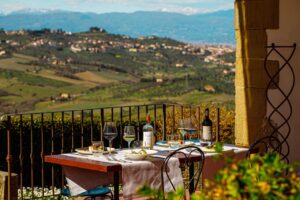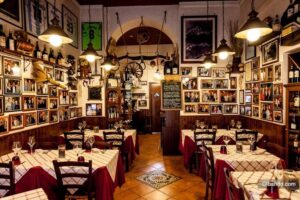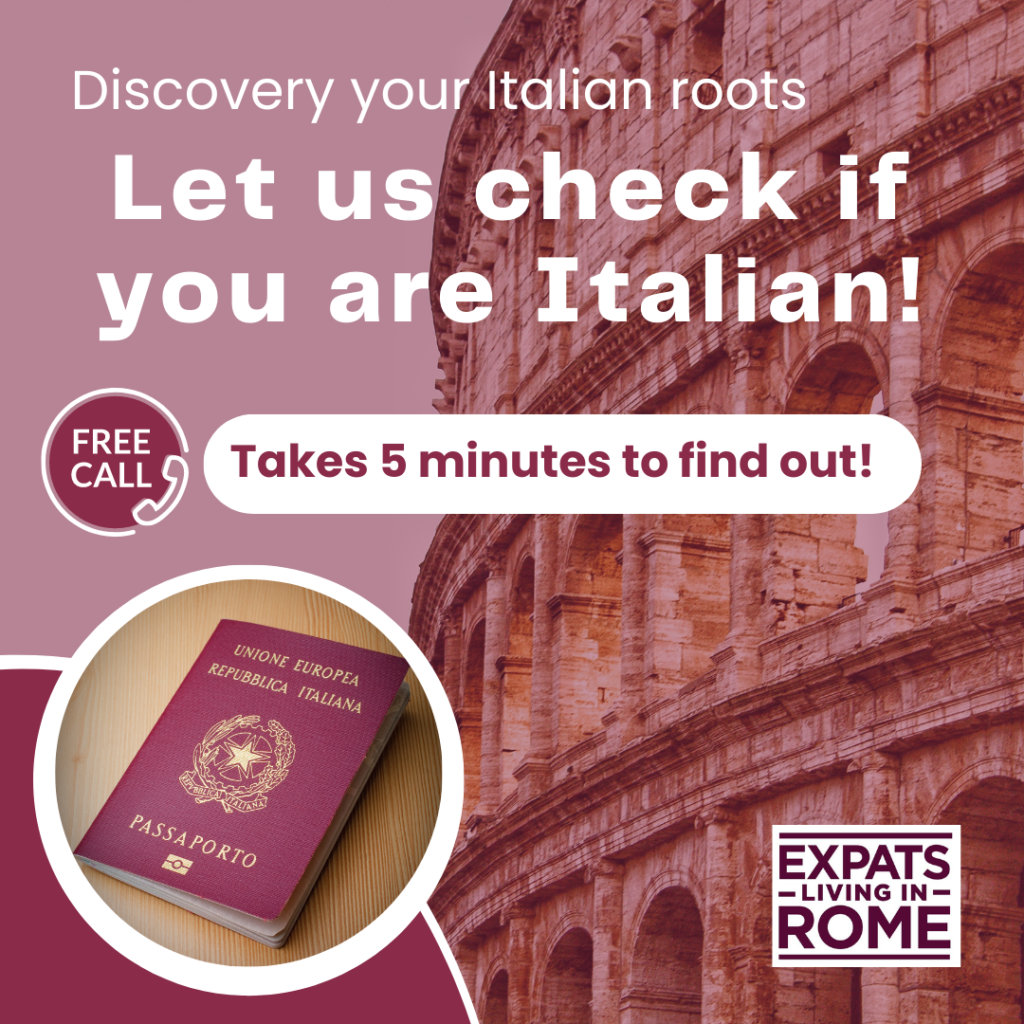A Guide to Italian Dining: Understanding Different Types of Restaurants in Italy
by Adriana ruiz
If you’re an expat or foreigner in Italy, navigating the diverse dining scene can be both exciting and overwhelming. With so many types of eateries, it’s easy to get lost in translation! From cozy trattorias to authentic pizzerias, Italy’s restaurant culture offers something for everyone. Here’s your comprehensive guide to understanding the various types of restaurants you’ll find in Italy.
1. Ristorante

Photo from Ristorante Biagio Pignatta
A ristorante is the most formal type of restaurant in Italy. It typically offers a full menu of appetizers, first courses (primi), main courses (secondi), desserts (dolci), and an extensive wine list. These establishments often have table service and a refined atmosphere. Prices can vary, but ristorantes are usually on the higher end due to the quality of food and service.
Perfect for: Celebrations, romantic dinners, or when you want a fine dining experience.
2. Trattoria

Photo from Trattoria di Danilo
A trattoria is a step down from a ristorante in terms of formality but is equally cherished by locals and visitors. It offers a more relaxed and casual atmosphere, often family-run, with a focus on hearty, traditional dishes. Menus tend to be smaller and may change daily, featuring regional specialties made with fresh, local ingredients.
Perfect for: A cozy, authentic Italian meal with a home-cooked feel.
3. Osteria

Photo from Osteria del Gelsomino
In the past, an osteria was a simple eatery where people gathered to drink wine and have a light snack. Nowadays, it often serves a variety of dishes but maintains a rustic, laid-back vibe. Osterias usually offer a limited menu with a few pasta dishes and local favorites, emphasizing quality and simplicity. Prices are generally reasonable, making it a great spot for a casual meal.
Perfect for: A relaxed meal with good wine in a casual setting.
4. Pizzeria

Photo from Emporio Pizzeria
A pizzeria specializes in Italy’s most iconic dish: pizza. You can find pizzerias ranging from hole-in-the-wall spots to more elaborate establishments with a full menu. The most authentic pizzerias serve pizza Napoletana, with its soft, thin crust, or pizza Romana, which has a crispier, thinner base. Many pizzerias offer other items like fritti (fried appetizers), salads, and desserts.
Perfect for: A quick, satisfying meal, especially when you’re craving pizza.
5. Taverna

Photo from Taverna dei Migliori
A taverna is similar to a trattoria but with a more rustic feel. Historically, tavernas were places for travelers to rest and eat. Today, they focus on serving traditional dishes in a warm, welcoming atmosphere. The decor is often old-fashioned, giving a nod to Italy’s rich culinary history.
Perfect for: A rustic dining experience, often with a cozy, vintage ambiance.
6. Enoteca

An enoteca is primarily a wine bar, but many also offer small plates of food to accompany the wine. The focus is on showcasing local wines, often from specific regions of Italy. The menu might include salumi (cured meats), formaggi (cheeses), and bruschetta. Enotecas are perfect for enjoying a glass of wine with a few light bites.
Perfect for: Wine tasting and enjoying light snacks in a relaxed setting.
7. Agriturismo

Photo from Agriturismo Cerqueti
An agriturismo is a farm stay experience that combines dining with a connection to the land. Located in rural areas, agriturismi serve dishes made with ingredients grown on the farm, offering a true farm-to-table experience. The menu features traditional, regional recipes, and the setting often includes beautiful countryside views.
Perfect for: A day trip or weekend getaway to enjoy authentic, fresh food in a rural setting.
8. Rosticceria

Photo from Rosticceria Due Torri
A rosticceria is a casual eatery specializing in roasted and fried foods. It’s a great spot to grab a quick, affordable meal. You’ll find items like arancini (fried rice balls), roasted chicken, and frittata. Many Italians stop by a rosticceria for a quick lunch or to pick up ready-made dishes to take home.
Perfect for: A quick, tasty meal or takeout options.
9. Paninoteca

A paninoteca is a sandwich shop, offering a variety of panini (sandwiches). It’s the perfect place for a quick bite, with options ranging from simple ham and cheese sandwiches to more elaborate creations featuring Italian cured meats, cheeses, and vegetables.
Perfect for: A quick, satisfying lunch on the go.
10. Bar

Photo from Cibotoday
In Italy, a bar is not just a place to get alcoholic drinks. It’s where locals go for a quick espresso, a pastry, or a light snack throughout the day. Bars are often busiest in the morning and during aperitivo (pre-dinner drinks and snacks). You can enjoy a coffee at the counter for a lower price or sit at a table for a more leisurely experience.
Perfect for: A coffee break, a quick breakfast, or an afternoon pick-me-up.
11. Tavola Calda

Photo from La Fonte Caffé
A tavola calda is a type of cafeteria-style eatery where you can get hot, ready-made dishes like pasta, risotto, and roasted meats. It’s popular with locals looking for a quick and affordable meal during lunch hours.
Perfect for: A fast, casual meal without sacrificing quality.
12. Pasticceria

Photo from Pasticceria Visconti
A pasticceria is a bakery that specializes in pastries and desserts. It’s the go-to place for sweet treats like cannoli, sfogliatelle, and tiramisu. Many pasticcerias also serve coffee, making them a great spot for an afternoon dessert and espresso.
Perfect for: Indulging your sweet tooth with Italian pastries.
Tips for Dining Out in Italy
∙ Cover Charge: Many restaurants add a coperto (cover charge), usually €1-€3 per person, which covers bread and table service.
∙ Water: Tap water is rarely served; you’ll be asked if you want acqua naturale (still water) or acqua frizzante (sparkling water).
∙ Tipping: Tipping is not obligatory in Italy, but rounding up the bill or leaving a small amount as a gesture of appreciation is common.
Next time you’re exploring Italian towns or cities, use this guide to choose the right spot for your meal and enjoy eating like a local. Buon appetito!
Subscribe to our newsletter to access content and updates to help navigate life as an expat in Italy. If you need help with your citizenship process, language courses, or general expat life in Italy, email us at [email protected].
Living in Abruzzo, Italy: Retire, Lifestyle, and Cost of Living (2025 Guide)
Why Choose Abruzzo? Abruzzo, located in central Italy between the Adriatic Sea and the Apennine Mountains, is a dream destination for those looking to retire or relocate for a more relaxed and affordable lifestyle. Known for its stunning landscapes, charming medieval villages, national parks, and friendly locals, Abruzzo offers an authentic Italian experience—without the crowds […]

A Guide to Getting Married in Italy to an Italian (2025 Edition)
If you’re a foreigner planning to marry an Italian in Italy in 2025, there are important legal steps to follow. This guide walks you through the process: Legal Requirements • Both partners must be at least 18 years old • Neither partner can be currently married • Divorce or death certificates must be provided if previously married Documents […]

How to find an apartment in Rome: the ultimate expat guide
Guest Article written by helpmaterome.com Finding an apartment to rent in Rome is HARD. Demand for rentals is sky-high, so that little place you had your eye on last week has probably already gone by the time you pick up the phone to ask about it. You need to move quickly at all stages: calling, […]

Italy Observes Duelo: The Papal Demise and Transition
Italy has entered a period of official mourning, or duelo, following the passing of His Holiness Pope Francis I on April 21, 2025. For foreign residents within the capital, the customs and procedures associated with a papal demise and subsequent election may present unfamiliar traditions. This article endeavors to illuminate the role of the papacy, […]

Easter in Italy 2025: What to See, Eat, and Celebrate
Whether you’re religious or not, Easter is a great opportunity to visit Italy or acquire an Italian mindset. The weather is pleasant, and there are numerous intriguing customs to observe, ranging from sprinting monks and massive sculptures to colorful processions and larger-than-life reenactments. The Papal Mass and Urbi et Orbi Blessing in Vatican City The […]

Things to Do in Italy in Spring 2025
Spring in Italy is a magical time. The weather is warm but not too hot, the flowers are in full bloom, and the cities come alive with festivals, outdoor activities, and cultural events. For expats living in Italy, it’s the perfect time to explore the country’s diverse landscapes and vibrant culture. Here’s a breakdown of […]

Changes to Italian Citizenship Law: What You Need to Know
Italy has recently enacted a significant reform to its citizenship laws, introducing stricter requirements for those seeking to claim Italian citizenship by descent (iure sanguinis). The new law, approved on March 28, 2025, is set to impact thousands of people worldwide who had planned to apply for Italian citizenship through their ancestral ties. What Has […]

Learning Italian – What’s the Best Way?
Guest Article written by Stefano from senseitalian.com If you’ve ever tried learning a new language, you know how frustrating it can be. You start out full of motivation, eager to dive into a new world of words and expressions. But soon, reality hits: native speakers talk too fast, grammar feels overwhelming, and even though you […]





